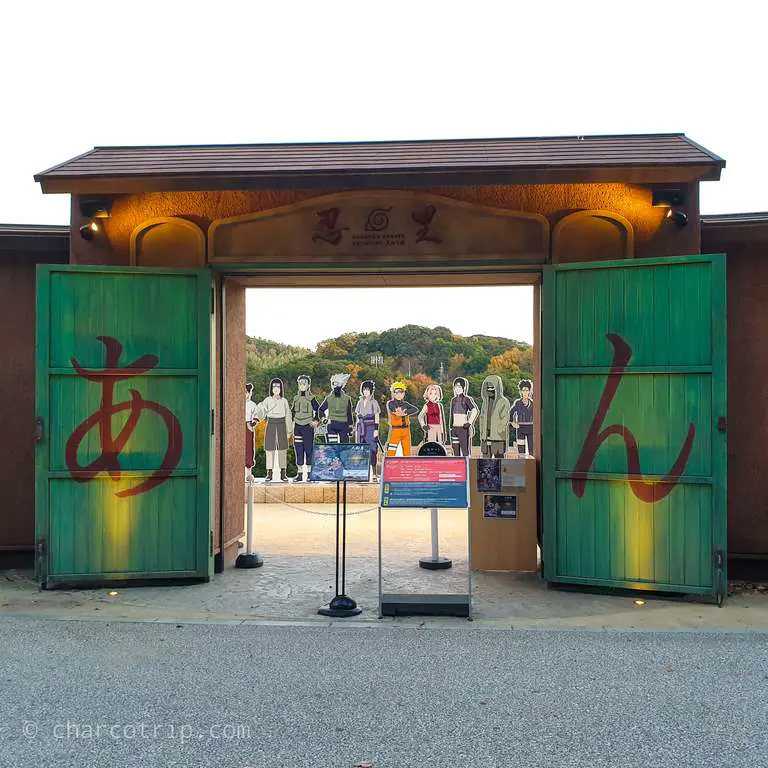Visit the Golden Temple, one of the lesser known wonders of India. One of the places not to be missed in the Punjab.
The Golden Temple of Amritsar is the most important site for Sikhs, as it is the birthplace of the Sikh religion and the place where they go to worship. The temple is beautiful and there are many things to see in a visit, which we will show you in this article.
If I had to choose one place, of all the places we visited during our trip to India, it would undoubtedly be the Golden Temple of Amritsar, considered one of the least known wonders of India. In this place, we spent our first afternoon in the Punjab region and managed to completely get away from the hustle and bustle of the city. We tell you everything in this story.
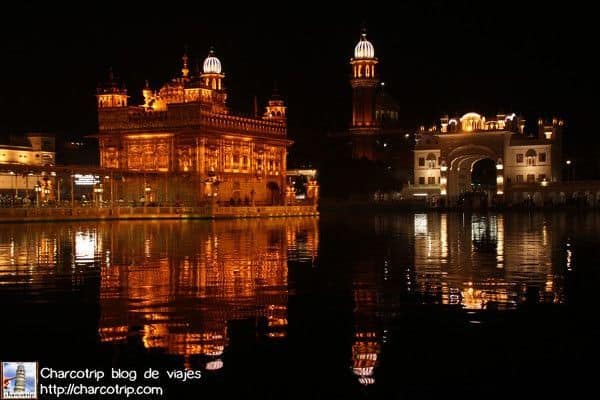
A bit about the Sikh religion
Created by Guru Nanak (1469-1539), Sikhism is the 9th religion in number of believers. The basic doctrine consists of the belief in a single God and the teachings of the ten gurus of Sikhism, collected in the sacred book of the Sikhs, the Guru Granth Sahib.
Sikh men can be quickly identified by the turban they wear, mistaken for Arab or Muslim items. Being in contact with them one realizes that there are more symbols of religion, for example metal bracelets that should be used as a symbol of faith.
Not all the five Ks or articles of faith are visible, but here is the list.
- kesh: long uncut hair
- khanga: a small wooden comb to tie up your hair
- kara: a metal bracelet
- kashera: cotton underwear
- kirpán: Originally it was a ceremonial sword, but nowadays, it is nothing more than a small dagger. It symbolizes power and freedom of spirit, self-respect, the constant struggle of good and morality over injustice. The kirpan should never be drawn to attack, but can be used for self-defense or to protect a third party.
The Golden Temple, or Harmandir Sahib, is visited by Sikhs at least once in their life. It is the devotees who participate, voluntarily, in the maintenance and charitable actions of the place.

Get your flight to India at the best price
What is the best time to see the Golden Temple?
Definitely the best time to visit is during golden hour, as the views are even more beautiful. In our case, we took the golden hour in the afternoon, as we could not wake up to be there at 4 am, for example.
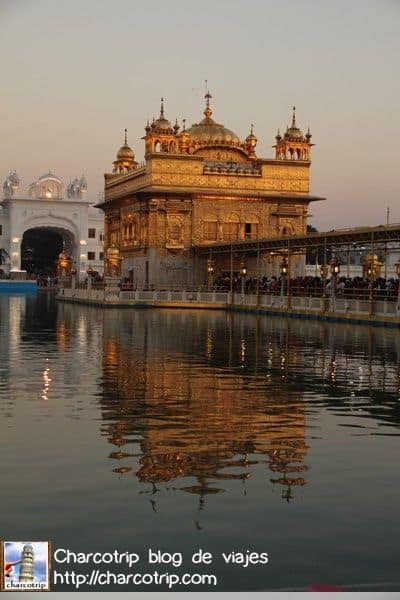
What can we see in a visit to the Golden Temple of Amritsar?
To get to the temple, we took a tuk-tuk from our hotel. Luckily, this place is known throughout the city, so there is no risk of getting lost. After going through the typical Indian traffic, we arrived.

So, you can see that I’m not exaggerating, here’s a video of the traffic we went through to get to the temple.
Putting away your shoes and covering your head
To enter the Golden Temple of Amritsar, you have to take off your shoes (and socks) and go with your head covered (men and women alike). I brought a little bag to carry the shoes, I didn’t love the idea of carrying them with me all the time. But zero panic! In the temple they have a place where they keep one’s shoes, completely free.
To cover our heads, we brought some scarves, but for those who didn’t bring them, on the street there were plenty of vendors with orange cloth to cover our heads. I owe you the price since I didn’t ask. Once you were barefoot and covered, you had to go through a mini pool where all your feet get wet (to purify them), for me, it was unpleasant since I am not very used to walking barefoot, but it was the price to pay to enter.

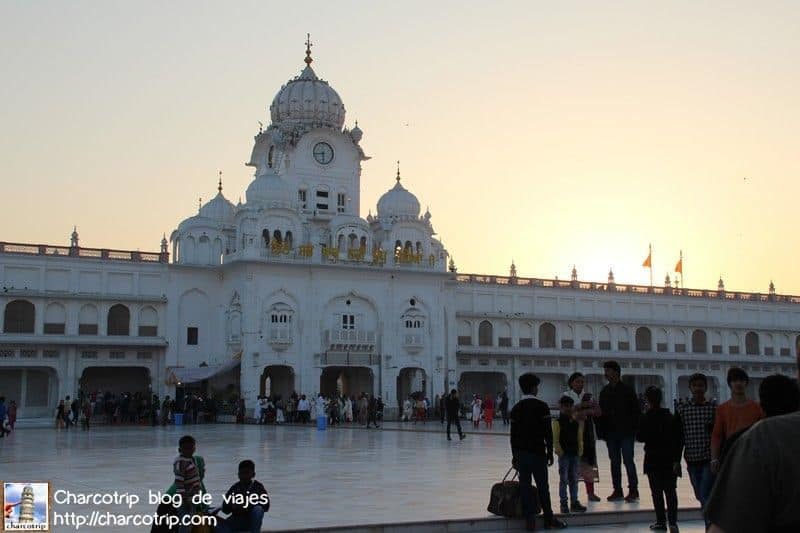
The Golden Temple of Amritsar at sunset
As soon as you enter you see that there are quite a few devotees in the place, few tourists, and what mainly involves my attention is the golden temple itself. We arrived just at sunset time and being able to see it was gorgeous. The golden temple shining in the middle of the lake was something special.
This is why going in the afternoon is a good time!

The architecture of the Golden Temple is a symbolic representation of Sikh thought. This temple has four entrances, one on each side, which symbolize the openness of Sikhs to all religions, among other aspects. The temple is open to people of any religion, nationality, sex, color or race. There are no restrictions to enter, except the observance of the most basic rules of conduct such as head covering, no shoes, modest dress, respectful, sitting on the ground as a sign of respect to the Adi Granth and God, no drinking alcohol, not eating and not taking drugs, among others.
In addition, listening to the songs that emanated from the temple, which were amplified with speakers so that they could be heard throughout the premises, gave the place an indescribable atmosphere even more.
Taking a picture
With the visitors of the temple, there was an amusing anecdote. Suddenly, a family approached me and asked me for a photo. I understood that they wanted me to take a photo of them, but no: what they wanted was to take a photo with me. It took me a while to understand what they wanted, it was very funny. On top of everything, it was a family with two children and a baby, and they told me “hold baby“… I grabbed it as best I could and the photo came out as it did. I found it curious when I saw the photo to realize that I was the only one smiling, everyone looked super serious. That was a funny moment.
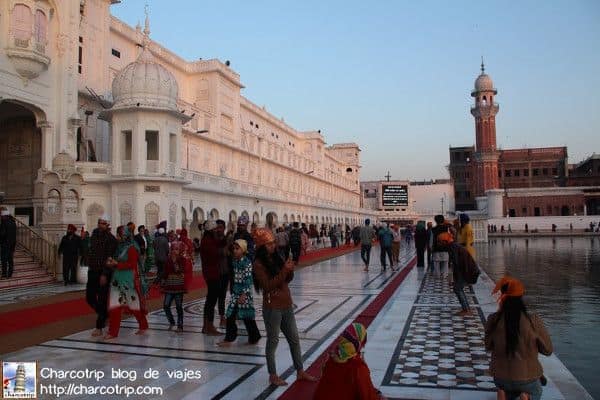
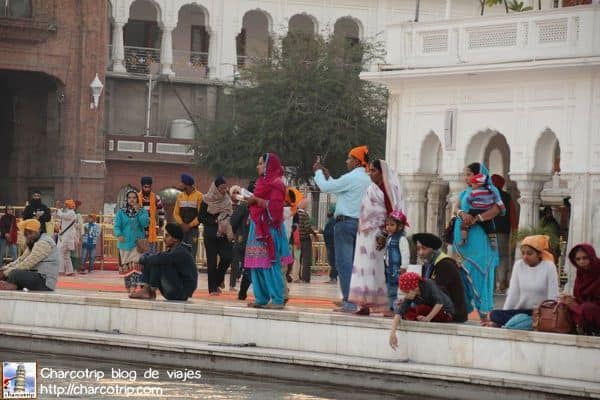
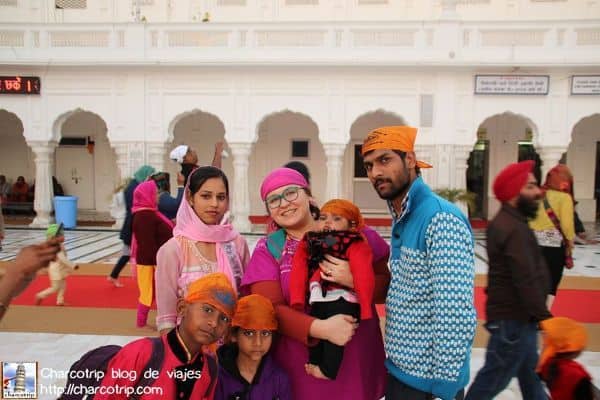
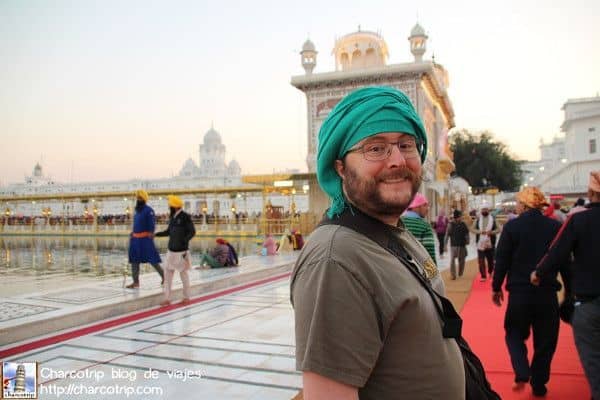

We sat for a moment on the shore of the lake, be careful to sit with our legs crossed so that your feet do not face the lake. Quickly, a temple guard came to tell me about my mistake.

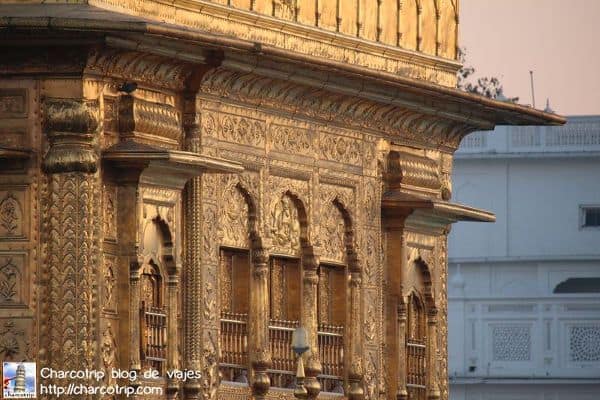

On the bridge to the temple you can see a huge queue, we didn’t know what it was, so we got into it.

Entering the Sanctum (Golden building)
When making the queue on the bridge, which is called causeway, we can see some screens with the lyrics of the reading we can hear in all the place. They are in three languages: Hindi, English and the third I guess would be Punjabi, the language of the region.
Reading the Holy Book
The queue advances slowly along that causeway, everyone very close but without being overwhelmed. When we arrive at the Sanctum, where photos cannot be taken inside, you see some gentlemen reading a huge book, which is the Holy Book, people walk and pray.
At that moment, we realized that we were entering a very sacred place for the Sikhs, we, who knew very little about that religion. No one had prevented us from passing because we were not Sikhs or anything, non-exclusion is felt in all its splendor, and it was great. We were always respectful, this is something you should always keep in mind, independently you know the religion or not, always respect.

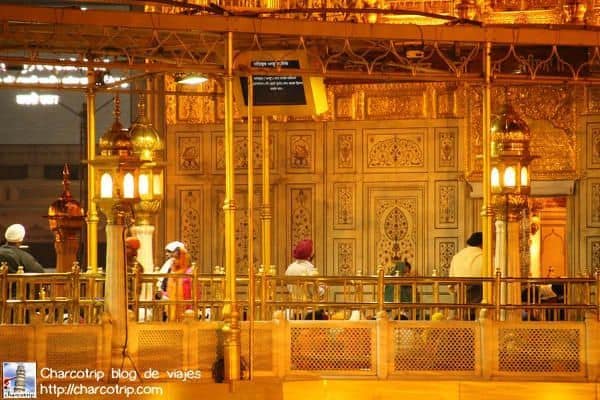

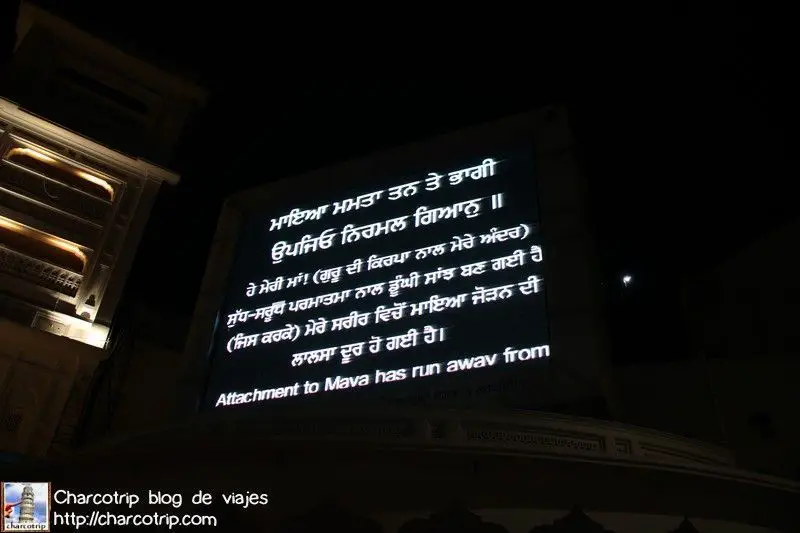
The Golden temple at nightfall
Leaving the most sacred place, night had already fallen, and we had another vision of the golden temple. Again we sat down for a while to observe everything while the readings, that felt like songs, continued.

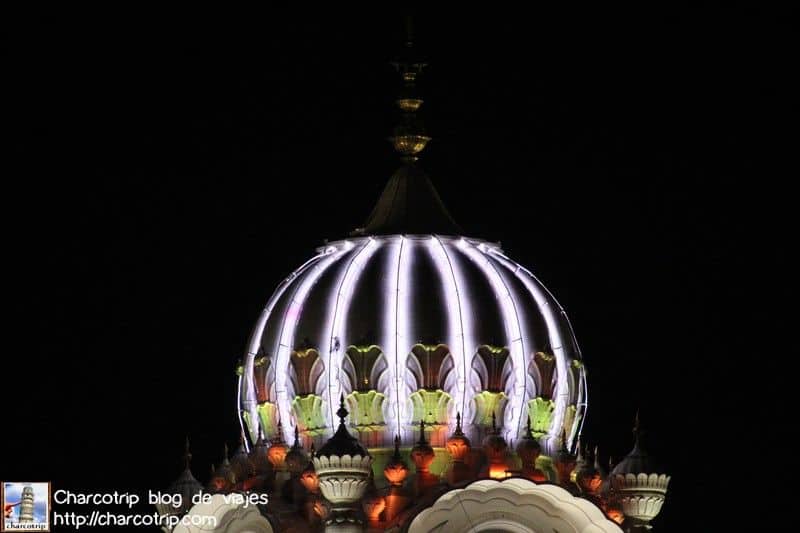

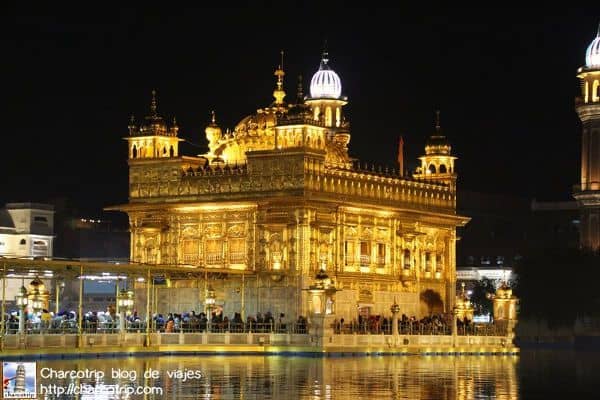
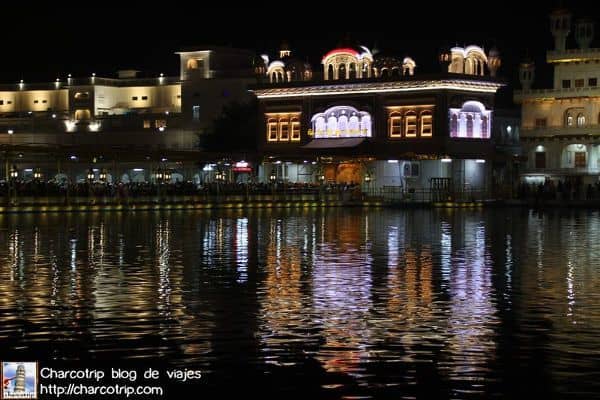

Are there volunteers and free meals on Golden temple?
Everything done in the temple must be done by the charity of the Sikhs themselves. They are the ones who offer their time and money to make it all work. Meals and lodging are even offered daily to those who need it. We did not eat, but we have seen other travelers who have, which proves once again that the Sikhs offer their charity equally to all regardless of religion.

Farewell to Golden Temple
With great regret, we said goodbye to the Golden Temple, even though we would return the next day it would not be the same as we could not spend as many hours as we did this wonderful afternoon.

Some of the links in this article include affiliate links. This means that if you buy a product listed here by following these links, we'll receive a commission. The use of this link does not increase the final price for you and thus helps us to keep our blog alive.



